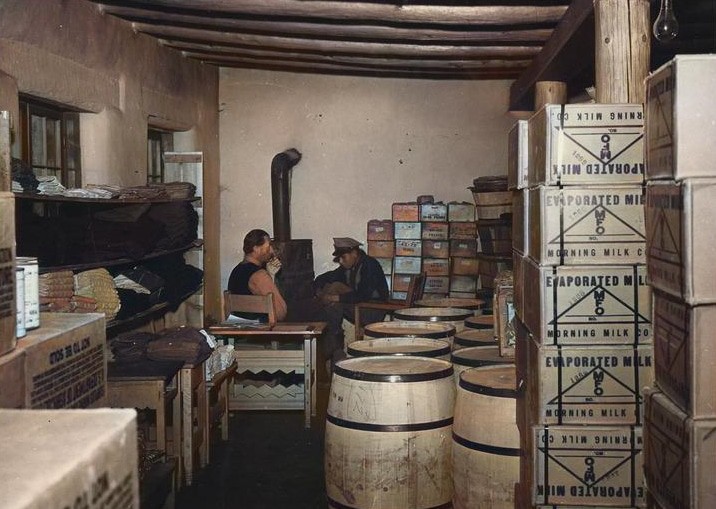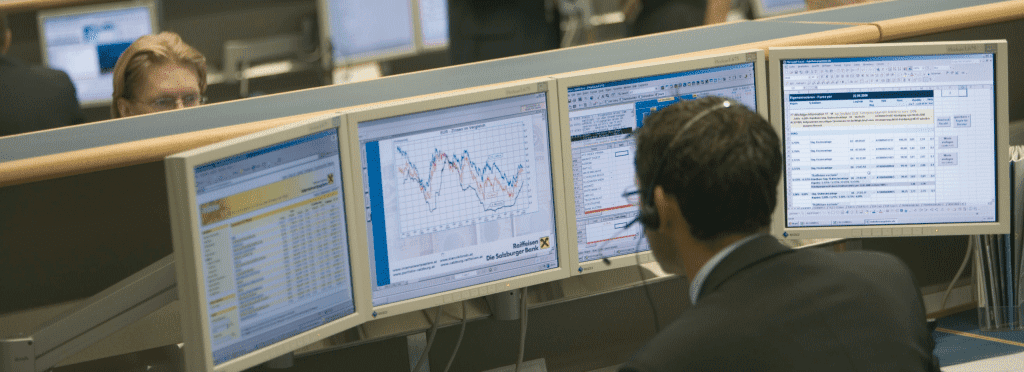Commodity Trading: An Evolution
Commodity trading has come a long way since its earliest origins. The trading of goods has been around for centuries, but it wasn’t until the advent of modern transportation and communication that commodity trading as we know it today emerged. Commodity trading is crucial for everyone as it affects our daily lives in many ways.
From the food we eat to the fuel we use, commodities play a vital role in shaping our daily existence. Trading helps ensure that the prices of these commodities are stable and that they are available when we need them. Commodity trading also generates economic activity, and in turn creates jobs in many different industries.
Supply and demand drive the commodity market. When the demand for a particular commodity is high and the supply is low, prices rise. Conversely, when supply is high and demand is low, prices fall. This creates opportunities for traders to make profits by correctly predicting market trends.
However, it’s not just about making money. Active participation in the commodity market helps create a well-functioning market for everyone. It helps regulate prices, promote competition, and prevent monopolies. It also encourages investment in the production of commodities, leading to increased efficiency and technological advancements.
Basics of Commodity Trading
The term “Commodity” refers to the common raw materials that you generally see in your daily life. Some examples of commodities are wheat, rice, gold, oil, natural gas, etc. As the name suggests, commodity trading refers to the trading of these commodities. In general, commodities are classified into 4 categories:
- Energy Commodities (crude oil, natural gas, and gasoline)
- Metal Commodities (gold, silver, nickel, and platinum)
- Livestock and Meat Commodities (pork bellies, live cattle, and feeder cattle)
- Agricultural Commodities (wheat, rice, cocoa, coffee, cotton, and sugar)
When talking about commodity trading, we differentiate between physical trading and financial trading. Physical trading involves the transfer of goods from the seller’s location to the buyer’s required destination. It is generally used by companies that are involved in the production of goods and require the commodity as raw materials or for other purposes. The pricing of physical commodities involves extra costs such as freight, transportation, taxes, etc. Financial trading mainly involves the buying and selling of commodities on the exchanges to make gains or hedge against a price rise or fall. It does not involve any movement of goods. Financial trading is mainly carried out by commodity traders and multinational companies.
History of Commodity Trading
Commodity Trading has made its impressive journey lasting as long as the human civilization. The commodity markets have seen it all from world wars to global financial crises, and now the pandemic and the Russia/Ukraine clash.

The roots of commodity trading can be traced back as early as between 4500 BC and 4000 BC in Sumer (modern-day Iraq). The Sumerians used clay writing tablets that contained information such as the number of goods to be delivered, date of delivery, etc. Such a contract has a resemblance to the futures derivatives contract used today. In the early days, civilizations were involved in the trading of goods such as cattle, gold, silver, grains, etc.
The establishment of the Chicago Board of Trade (CBOT) in the 19th century was an important milestone in the history of commodity trading. CBOT initially offered commodity trading for corn and wheat with further expansion to plywood and silver in 1969. The volumes in commodity markets have grown at an exponential rate with further potential to rise with the advent of modern technology and online trading. Some of the biggest commodity exchange markets in the world are the Chicago Board of Trade (CBOT), London Metals Exchange (LME), New York Mercantile Exchange (NYMEX), Shanghai Futures Exchange (SHFE), and European Energy Exchange (EEE).
Working Mechanisms of Commodity Trading
In the past, trading mainly took place in physical markets where goods were physically exchanged. The bargaining process was time-consuming and dependent on personal relationships. With the advent of brokers, traders could negotiate prices and complete transactions more efficiently.
However, the biggest change came with the introduction of electronic trading. It has made the commodity market more accessible and efficient by eliminating the need for physical marketplaces. Traders can now access real-time market data and execute trades instantly. This has increased transparency and reduced the cost of trading.
Additionally, electronic trading has also allowed for the development of complex financial instruments such as futures and options. These instruments allow traders to manage price risks and make more informed trading decisions. Moreover, algorithmic trading has become prevalent in the commodity market, enabling traders to execute trades faster and with greater accuracy.
However, the increased automation of the commodity market has also brought new challenges. For instance, there have been concerns about the potential for market manipulation and the dependence on technology. As a result, regulatory bodies have stepped in to enforce fair trading practices and reduce the risks associated with electronic trading.
We can see that commodity trading has undergone significant changes over the years. From direct exchange to electronic trading, the commodity market has become more accessible, efficient and transparent. Although the use of technology has brought new challenges, regulatory bodies are working to ensure fair and safe trading practices.
Evolution of Commodity Trading Firms
In the 1900s, commodity traders were primarily involved in speculative trades and arbitrage opportunities that enabled them to earn good profits. But things have come a long way since then as commodity trading firms are now an integral part of the supply chain. This backward integration in the acquisition of physical assets combined with their trading knowledge gives a huge advantage to commodity trading firms. Owning the supply of a commodity allows the commodity houses to dictate the prices and then take positions in trade markets allowing them to make huge profits.
Importance of Commodity Traders
According to a 2019 report by UNCTAD, more than half of the world’s countries (102 out of 189) and two-thirds of developing countries are dependent on commodities. As a result, many global commodity houses such as Glencore, Trafigura, Vitol, Mercuria, Koch Group, ADM, Cargill, and Louis Dreyfus are important figures in ensuring commodity supply. They have the power to dictate the flow of assets and determine commodity prices.
For instance, Vitol, one of the biggest commodity houses in the world, reported a trading volume of 7.6 million barrels of crude oil & products a day in 2021. Such a huge volume is more than enough to satisfy the needs of various nations. Commodity markets are an integral part of the global company being the primary drivers of inflation and growth. As such, economies around the world have their oversight committees such as Federal Energy Regulatory Commission (“FERC”) and the Commodity Futures Trading Commission (“CFTC”) that ensure trading takes place while keeping in mind the rules and regulations.
Even though commodity traders are sometimes portrayed as evil corporate men, the amount of risk they bear by owning and trading in such assets is highly remarkable. Commodity traders ensure that the goods reach from the seller to the buyer, fulfilling the gap in global demand and supply. Their existence is vital for the global supply of goods. These companies generate huge business for the economies in the form of taxes, employment, investments, research, and innovation.
Funding Commodity Trading
Commodity trading requires significant capital. Traders often need to finance their operations, including the purchase of commodities and the management of associated risks. In this article, we’ll explore some of the key considerations for financing commodity trading.
Types of Financing
Traders have a variety of financing options to choose from, including bank loans, trading credit, and other forms of debt. Additionally, traders may raise capital through equity financing, such as issuing shares or bonds. The choice of financing will depend on the trader’s specific needs and objectives.
Risks and Rewards
Regardless of the financing method, commodity trading involves risks, including market volatility, credit risk, and operational risk. As a result, traders must carefully consider the potential rewards and risks associated with each financing option. For example, while debt financing may provide quick access to capital, it also comes with the risk of having to pay interest and principal on a regular basis, regardless of market conditions. On the other hand, equity financing may provide a lower cost of capital, but also involves giving up ownership in the company.
Credit Ratings and Counterparty Risk
Credit ratings and counterparty risk are important considerations for commodity traders. A strong credit rating can help traders access financing at more favorable terms, while counterparty risk refers to the risk that a trading partner will default on their obligations. As a result, traders must carefully evaluate the creditworthiness of their counterparty and the security of their collateral.
Regulations
In addition to the financial considerations, commodity traders must also be aware of regulatory requirements. Different countries have different regulations regarding commodity trading, including reporting and disclosure requirements, margin requirements, and more. Traders must comply with these regulations to avoid penalties and reputational damage.
In conclusion, financing commodity trading is a complex process that requires careful consideration of various factors, including types of financing, risks and rewards, credit ratings, counterparty risk, and regulations. Traders must balance the need for capital with the potential risks and rewards of each financing option to make informed decisions.
Managing Risk
Commodity trading involves significant financial risks. The COVID-19 pandemic and then the Russia-Ukraine crisis have added an extra layer of complexity to this already challenging industry.
Hedging Strategies
One of the most effective ways to manage financial risk in commodity trading is to use hedging strategies. Hedging involves taking offsetting positions in the market to reduce exposure to price movements. By using hedging, traders can protect themselves against potential losses due to price volatility, geopolitical events, and other factors that can impact commodity prices. By using a combination of different hedging strategies, traders can reduce their exposure to price movements and minimize their potential losses. However, it is important to keep in mind that hedging also involves its own risks, such as basis risk and counterparty risk, so it is important to carefully evaluate the trade-offs before entering into any hedging positions.
Available hedging instruments
There are several types of hedging instruments that traders can use to manage financial risks in commodity trading.
- Futures Contracts: Futures contracts are the most commonly used type of hedge in commodity trading. They involve entering into an agreement to buy or sell a commodity at a fixed price at a specified future date. This allows traders to lock in a price for their commodity, thereby reducing their exposure to price movements.
- Options: Options are another type of hedge that can be used in commodity trading. They give traders the right, but not the obligation, to buy or sell a commodity at a specified price. This allows traders to benefit from price movements while limiting their potential losses.
- Swaps: Swaps are a type of financial derivative that allow traders to exchange one type of financial instrument for another. For example, a trader might enter into a swap agreement to exchange a fixed price for a commodity for a floating price. This can be used to manage financial risks in commodity trading by reducing exposure to price movements.
- Spreads: Spreads are a type of hedge that involves taking offsetting positions in two different commodities. For example, a trader might buy a futures contract for one commodity and sell a futures contract for another commodity at the same time. This type of hedge can be used to reduce exposure to price movements and to benefit from price differentials between two commodities.
Diversification
Diversification is another important strategy for managing financial risks in commodity trading. By spreading investments across multiple commodities, traders can reduce their exposure to the risks associated with any single commodity. This can help to minimize the impact of price volatility and other risks associated with commodity trading.
Risk Management Systems
Traders must also have effective risk management systems in place to identify, monitor, and manage risks effectively. This can include tools such as value at risk (VaR) models, stress testing, and scenario analysis. By monitoring risk metrics on a regular basis, traders can take proactive steps to mitigate risks and avoid potential losses.
The Impact of COVID-19
The COVID-19 pandemic has had a significant impact on the commodity trading industry, with many markets experiencing signifcant volatility. As a result, traders must be extra vigilant in managing their financial risks. This can include closely monitoring market developments, adjusting hedging strategies as needed, and having contingency plans in place to deal with potential disruptions.
Commodity Traders role in today’s ESG era

In today’s ESG era, the role of commodity traders goes beyond buying and selling commodities. They must take a proactive approach in promoting sustainability and mitigating negative environmental and social impact. They must assess the ESG risks associated with each commodity and implement measures to mitigate these risks. This includes ensuring that their suppliers are compliant with labor, environmental, and human rights standards.
Traders must also engage in transparent and responsible sourcing practices. This includes implementing due diligence processes to verify the sustainability of the commodities they trade, such as tracking the origin of minerals and other raw materials.
Another important aspect of a trader’s role in today’s ESG era is stakeholder engagement. Traders must be open and transparent in their ESG practices and be willing to engage in discussions with stakeholders, such as investors, customers, and civil society organizations. This helps to build trust and ensure that ESG considerations are integrated into the commodity trading process.
Bottom Line
Commodity trading has seen a drastic change over the past decade. Bigger commodity houses have become an integral part of the supply chain. With a bigger role to play in climate change and ensuring an uninterrupted supply of goods, commodity traders have a greater role to play in the world economy. Some issues regarding business practises still persist. However, efforts have been taken by both governments and commodity traders to ensure better business practices that are targeted toward sustainability, human rights issues, and compliance with laws. Commodity traders will continue to face a huge amount of backlash and risk in the coming times. The way they adapt to the changing world order of ESG will only be determined in the future.
About ComFin Software
Since 1997, ComFin Software has been trusted as a global leader for affordable, comprehensive, and agile financial risk management software solutions. Those are categorised as CTRM (Commodity Trading and Risk Management). They have helped companies such as trading houses, refineries, and shippers across the globe to minimise their exposure to volatile markets by arming them with the knowledge, resources, and administrative processes they need to perform commodity trading successfully.
With the CTRM solution Comcore™ you will have the perfect tools to maximise your profits by minimising your financial risks.
Instead of having to deal with paperwork, or maintaining, updating, and reviewing multiple spreadsheets, the Comcore™ system helps you streamline everything from trading futures and options to their underlying commodities (i.e., paper and physical markets).
The complete Comcore™ software is available in 108 languages.
Furthermore, ComFin Software is recognised for its ability to provide consulting services in all aspects of commodities trading.

